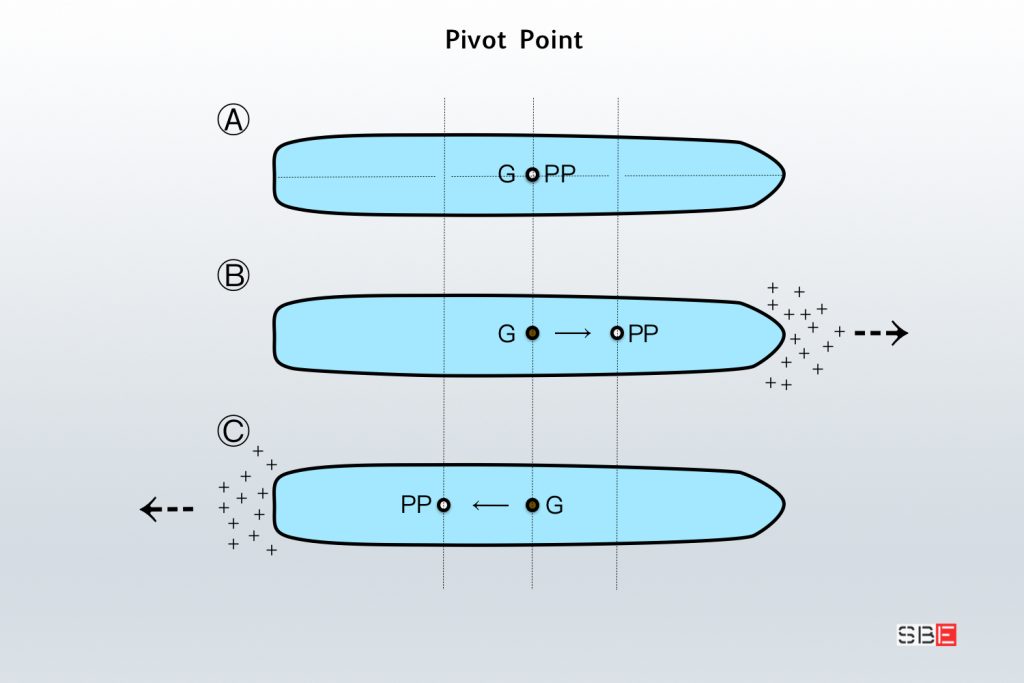How the Pivot Point Affects the Manoeuvre Copy
It is the right time to introduce Pivot Point.
Pivot Point may change in position, and we will learn how. But also, an observer may change its position concerning the Pivot Point.
The fore, aft or centre vessel’s Bridge dramatically influences the perspective of the manoeuvre. Bending a curve with a Car Carries or a traditional bulk is different. The forward bridge position changes the parameters and how to conduct the turn.
In short, moving the position concerning the pivot point shuffled cards on the table.
We now define “pivot point” (PP):

Pivot Point is the fixed point on which the ship rotates, or it is the point on which, during turning, the axis of the vessel passes and is not affected by lateral movements. Any other point follows curves that vary according to the angle of the rudder and the ship’s speed.
Whit stationary vessel, the gyratory point coincides with its centre of gravity and is positioned more or less amidships.
If, on the other hand, we consider the ship in its forward motion, we have the action of two forces: the first generated by the forward motion and the second from the resistance of the water. The new pivot point is the resultant of the two forces, and, in the practice of the manoeuvre, we can consider it between 1/3 and 1/4 the ship’s length starting from the bow.
Using the dredging anchor increases the resistance that moves the pivot point forward very close to the ship’s bow. The PP movement is why the dredging anchor is so effective. The ship’s bow becomes the fixed point that can be quickly oriented, and the rudder enlarges its effectiveness for sensitive movements of the stern without increasing the ship’s speed.
